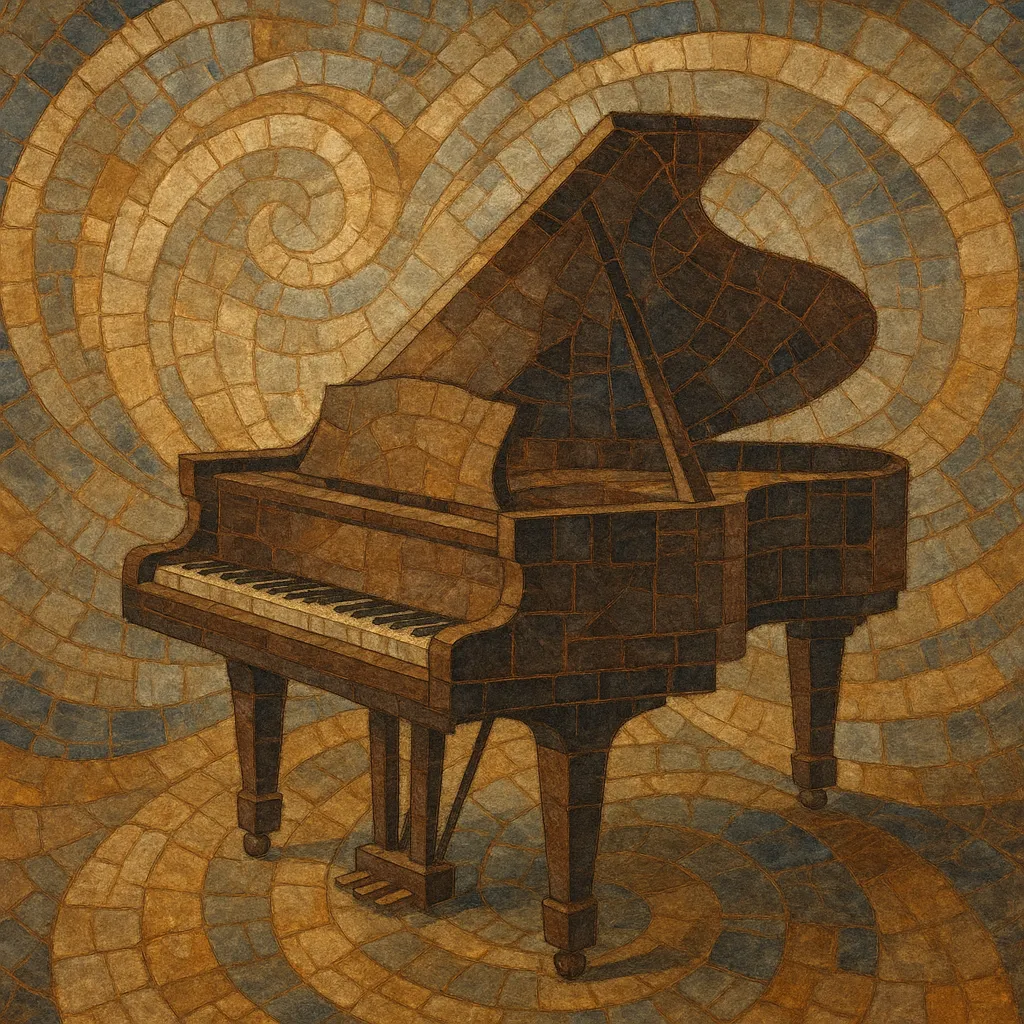A prelude is a short, often improvisatory-sounding instrumental piece that traditionally precedes another work or sets a tonal and expressive atmosphere on its own.
Emerging in the early Baroque era from the practice of freely extemporizing before a liturgical or secular performance, the prelude evolved from unmeasured lute and keyboard introductions into highly crafted pieces for organ, harpsichord, and later piano. In the 19th century it became an autonomous character piece (e.g., Chopin’s Op. 28), while in the 20th century composers explored cyclic sets across all keys and a wide range of styles (Debussy, Rachmaninoff, Shostakovich).
Despite its brevity and flexibility, the prelude typically establishes a key or mode, a figuration pattern, and a distinct mood, favoring clear tonal focus, continuous flow, and a compelling gesture over strict formal constraints.
The prelude arose from performers’ habit of improvising before a piece to test tuning, establish the key, and set the mood. Early unmeasured preludes by French lutenists and clavecinists (e.g., the Couperin tradition) exemplify the free rhythmic approach. In German-speaking regions, organists such as Buxtehude and Pachelbel cultivated organ preludes as openings to liturgical music.
Johann Sebastian Bach elevated the genre with the Well-Tempered Clavier, pairing preludes with fugues in every key. His preludes demonstrate the form’s versatility—from arpeggiated textures and motoric figuration to contrapuntal miniatures—while retaining the prelude’s essential function: to establish key, texture, and affect with immediacy.
In the Romantic era the prelude became an autonomous concert piece. Frédéric Chopin’s 24 Preludes, Op. 28, redefined the genre as a cycle of concentrated moods and pianistic ideas. Composers such as Mendelssohn, Liszt (in other forms), and later Fauré and Scriabin expanded the range of harmonic color, expressive nuance, and technical figuration, merging improvisatory spirit with refined craft.
Claude Debussy’s two books of Preludes fused the genre with impressionistic sonorities, modal inflections, and evocative titles, renewing the prelude as a vehicle for timbral poetry and suggestive imagery. Rachmaninoff’s sets (Opp. 3/2, 23, 32) combined virtuosity with lyrical intensity, while Scriabin’s numerous preludes charted a path from late-Romantic harmony to mystic, highly chromatic languages.
Dmitri Shostakovich revitalized the Bachian pairing with his 24 Preludes and Fugues, Op. 87, integrating modern tonal language and contrapuntal rigor. Since then, composers have continued to write preludes for organ, piano, and other instruments, using the format as a compact laboratory for harmonic exploration, textural invention, and mood-setting—true to the genre’s improvisatory roots yet open to contemporary idioms.
Decide whether your prelude introduces another work (e.g., a fugue or suite) or stands alone as a compact character piece. Either way, prioritize a strong opening gesture that sets key, texture, and mood within the first bars.
Choose a clear tonal center (major or minor) or a modal/extended-tonal palette if writing in modern styles. Outline the key early through pedal points, broken chords, or scalar motion. Use a brief harmonic journey—tonic to dominant and back, or a color-rich sequence—keeping the arc concise.
Adopt a signature texture and sustain it: arpeggiated patterns, repeating figurations, chordal bell sonorities, or contrapuntal lines. For keyboard, craft idiomatic hand patterns that flow naturally; for organ, plan registrations to shape dynamic tiers and color.
Favor a continuous, speech-like flow rather than sectional rhetoric. Rubato or flexible tempo can enhance the improvisatory feel. Maintain momentum through pattern variation, dynamic shading, and harmonic pacing instead of lengthy thematic development.
Keep it short (1–4 minutes is typical). Through-composed or simple arch (A–B–A’) forms work well. Conclude decisively—often with a cadence or textural thinning that reaffirms the tonic and the established mood.
Exploit timbre: pedaling for resonance on piano, registration changes on organ, and articulation contrasts (legato vs. broken) to carve phrases. If evocative titles inspire you (à la Debussy), let imagery guide harmony and texture without overcomplicating form.


